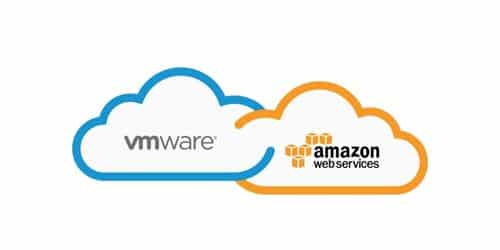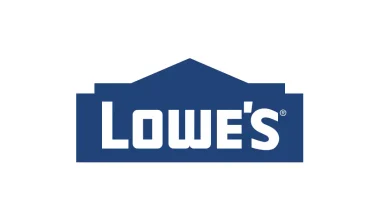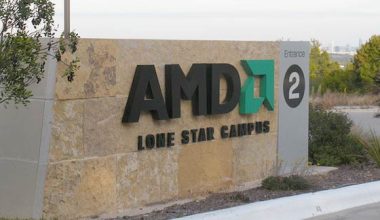AWS is a part of Amazon Corporation and has been in business since 2002 as a web service. However, in 2006, it became a cloud service. On-demand, it supplies its virtual platform, building pieces, and tools. AWS charges on a per-use basis. This article talks about the Amazon Web Services (AWS) logo and the transparent logo. It also talks about how to obtain the certifications of AWS for careers and console AWS.
What is AWS?
The Amazon Web Services logo is a representation of the data cloud. Using the platform simplifies the user’s life and provides a source of happiness. Platform apps are easy to use and speed up work.
Amazon Web Services is an Amazon company that offers APIs as well as cloud computing platforms. All of the designated services are set apart by a type of extended technology infrastructure, building components, and the ability to do distributed computing. Amazon EC2 is one example of such a tool (Amazon Elastic Compute Cloud). It lets you use a group of virtual PCs that can be reached at any time over the Internet. The department was put together in 2006, but the launch had been in place four years earlier.
AWS is now available in many nations throughout the world due to its strong means of gaining access to vast processing capacity. Furthermore, this strategy is less expensive and faster in operation than traditional server farms, which necessitate the development and maintenance of distinct servers. In this instance, interested parties must just pay for and use the desired service. And there are a lot of them at the company: analysis, management, storage, development, networks, databases, mobile tools, and tools.
The new structure received a logo in the same distinctive style as the parent corporation to underscore the inextricable relationship. It debuted in conjunction with the launch of a virtual product and communicated its essence directly. The service has two different emblems.
Its Backstory
AWS’s history is as follows;
The Beginnings (2000)
AWS began in the early 2000s. The experience of setting up Merchant.com, Amazon’s e-commerce-as-a-service platform for third-party retailers to build their own web stores, led the company’s CTO at the time, Allan Vermeulen, to look into service-oriented architecture as a way to scale their engineering operations.
Around the same time, Amazon wasn’t happy with how fast its software engineering was moving. At the time, an engineering leader named Matt Round gave Amazon a number of suggestions, such as giving engineering teams more freedom, using REST, standardizing infrastructure, getting rid of gatekeepers (bureaucracy), and implementing continuous deployment. He also pushed for engineers to spend more time making software instead of doing other things.
Amazon made a “shared IT platform” so that its engineering departments, which used to spend 70% of their time on “undifferentiated heavy lifting” like IT and infrastructure problems, could instead focus on customer-facing innovations. Also, Amazon’s infrastructure team, which was led by Tom Killalea, the company’s first chief information security officer (CISO), already ran their data centers and related services in a way that was “fast, reliable, and cheap” to deal with unexpected traffic peaks.
In 2002
Colin Bryar was in charge of Amazon.com Web Services when it launched its first web services in July 2002. This made the Amazon.com platform available to all developers. In 2004, around 100 apps were built on it. Amazon was caught off guard by this unexpected developer interest, which convinced them that developers were “hungry for more.”
In 2003
Andy Jassy took over Bryar’s portfolio in the summer of 2003 when Bezos’ original choice, Vermeulen, declined. Jassy then outlined his vision for an “Internet OS”[16][18][20][32] comprised of foundational infrastructure primitives that remove key impediments to faster software application delivery. By the fall of 2003, Amazon had decided that databases, storage, and computing should be the first parts of its infrastructure to go live.
Jeff Barr was one of the first people to work for AWS. He thinks that Vermeulen, Jassy, Bezos, himself, and a few others came up with EC2, S3, and RDS. Jassy spent a week thinking about ten Internet apps and their core components. Werner Vogels claims Amazon’s propensity to “develop, launch, reinvent, relaunch, start over” led to “two-pizza teams” and distributed application frameworks. These modifications lead to AWS, which aims to “reveal all of Amazon.com’s atomic-level parts.” Brewster Kahle, who helped make Alexa Internet, says that his company’s processing infrastructure helped Amazon deal with its big data problems and led to AWS improvements.
To kick-start these initiatives, Jassy assembled a founding team of 57 employees from a mix of engineering and business backgrounds, with the majority of hires coming from outside the company, including Jeff Lawson, Twilio CEO, Adam Selipsky, Tableau CEO, and Mikhail Seregine, co-founder of Outschool.
In 2004-2005
Chris Pinkham and Benjamin Black wrote an internal paper at the end of 2003 about their ideas for Amazon’s retail computing infrastructure. It was completely consistent, automatic, and primarily reliant on web services like storage. The paper was based on work that was already set to start. At the end of their paper, they talked about the possibility of selling access to virtual servers as a service. Moreover, this suggested that the company could make money from the new infrastructure investment. Pinkham, Willem van Biljon, and lead developer Christopher Brown then collaborated with a team in Cape Town, South Africa, to create the Amazon EC2 service. In November 2004, AWS debuted its first public infrastructure offering, Simple Queue Service. (SQS).
In 2006
The premiere logo represents AWS. On the left, three rhombuses each form five identical cubes. The right-left and top sides rotate geometric forms. These are also metaphorical “containers” containing data and digital things. However, between the rhombuses that create the margins of yellow cubes, there are white lines of varying lengths that resemble a honeycomb.
The text is divided into two lines. The most important aspect is, of course, the shared name with the parent corporation. It is also taller and takes up the full top row. The remaining elements are also written in thin characters and are placed at the bottom.
AWS released Amazon S3 cloud storage on March 14, 2006, followed by EC2 in August of the same year. AWS founder and vice president Andy Jassy stated in 2006 that Amazon S3 “helps developers avoid worrying about where they will store data; whether it will be safe and secure; whether it will be available when needed; the costs associated with server maintenance; or whether they have enough storage available.” “Amazon S3 allows developers to focus on data innovation rather than data storage.” Paul Maritz’s startup, Pi Corporation, was the first beta user of EC2 outside of Amazon, and Microsoft was among the first enterprise clients. Later that year, SmugMug, one of the first companies to use AWS, said that S3 saved them almost $400,000 in storage costs. According to Vogels, S3 began with eight microservices in 2006 and will have over 300 by 2022.
In 2007
AWS announced its annual Start-up Challenge in September 2007, a contest with $100,000 in prizes for entrepreneurs and software engineers residing in the United States that use AWS technologies such as S3 and EC2 to grow their enterprises. Justin. tv, which Amazon later acquired in 2014, participated in the first edition. The winner was Ooyala, an internet media firm.
SimpleDB, Mechanical Turk, Elastic Block Store, Elastic Beanstalk, Relational Database Service, DynamoDB, CloudWatch, Simple Workflow, CloudFront, and Availability Zones are some more AWS services from this time period.
Improvement (2010)
In November 2010, it was said that all of Amazon.com’s shopping sites had moved to AWS. Before 2012, AWS was thought of as a part of Amazon.com, and its income was not reported separately in Amazon’s financial reports. In that year, industry observers expected AWS sales to reach more than $1.5 billion for the first time.
On November 27, 2012, AWS held its first big annual conference, called “reinvent.” There were more than 150 talks about AWS’ partners and ecosystem. The three-day event was held in Las Vegas due to its cheaper connectivity with U.S. and international venues. Keynotes were given by Andy Jassy and Werner Vogels, with Jeff Bezos joining Vogels for a fireside discussion. AWS has started early registration for customers from over 190 countries at a cost of $1099 per person. At the event, which had roughly 6,000 attendees, Reed Hastings, CEO of Netflix, announced intentions to transition 100% of Netflix’s infrastructure to AWS on stage alongside Andy Jassy.
On April 30, 2013, AWS started a certification program for computer engineers. However, the program focuses on cloud computing skills and is meant to help train and standardize skills across the industry. Moreover, in October of that same year, AWS launched Activate, a program that lets start-ups from all over the world use AWS credits, third-party integrations, and free access to AWS experts to grow their businesses.
2014
However, in 2014, AWS started the AWS Partner Network (APN) with the goal of helping AWS-based businesses grow and scale their success by working closely with them and sharing best practices. However, in January 2015, Amazon Web Services gave an amount that was not made public to Annapurna Labs, an Israeli company that makes microelectronics.
Amazon.com said in April 2015 that AWS was making money, with $1.57 billion in sales in the first quarter and $265 million in operating profits. Jeff Bezos, who started it, said that it is a $5 billion business that is growing quickly and is “surprisingly more profitable than expected.” In October, when Amazon.com announced its financial results for the third quarter, it said that AWS’s operating income was $521 million and its operating margins were 25%. However, AWS’s third-quarter revenue in 2015 was $2.1 billion, a 78% increase over the same period in 2014. The AWS segment’s sales also climbed 69.5% year on year to $2.4 billion in the fourth quarter of 2015, with a 28.5% operating margin, giving AWS a $9.6 billion run rate. Gartner says that in 2015, AWS customers put up 10 times more infrastructure on AWS than on the next 14 providers put together.
Market Supremacy (2016)
James Hamilton, who is in charge of AWS’s computing, data center, and network design, wrote an article in 2016 that looked back at the online service’s first ten years, from 2006 to 2016. He joined the AWS engineering team in 2008, even though he had been a big fan of the technology for a long time.
In the first quarter of 2016, revenue was $2.57 billion, with a net income of $604 million, a 64% increase over the previous year’s first quarter, making AWS more profitable than Amazon’s North American retail operation for the first time. Jassy was then appointed as division CEO. At the same time, Amazon’s stock price grew by 42% as a result of increasing earnings, with AWS accounting for 56% of corporate profits.
2017
In 2017, AWS earned $17.46 billion in sales. The figure is expected to rise to $46 billion by the end of 2020. Jassy’s yearly salary in 2017 was approximately $36 million, reflecting AWS’s success.
When the service gained popularity, the proprietors updated it, choosing a more concise moniker. So, the current logo consists of “AWS” and Amazon’s signature “smile,” an arrow pointing up and to the right. It gives users a kind of grin and reminds them that this service is a subsidiary of it. The creators picked dark graphite instead of charcoal black, like in the original.
Amazon Web Services (AWS) introduced an autoscaling service in January 2018. AWS revealed bespoke ARM cores for usage in its servers in November 2018. AWS is also creating ground stations in November 2018 to communicate with customer satellites. Amazon AWS also grew 37% year-on-year in 2019, accounting for 12% of Amazon’s revenue (up from 11% in 2018). AWS grew by 32% year-over-year in April 2021 and had 32% of the $41.8 billion cloud market in Q1 2021.
2022 – Present
In June 2022, it came out that Capital One had not properly protected its AWS resources in 2019 and had left them open to a data breach by Paige Thompson, an ex-AWS member. However, the employee was found to have broken into the company’s cloud servers to steal customer information and use computer power to mine cryptocurrencies. The ex-employee had access to more than 100 million Capital One customers’ personal information.
AWS announced in June 2022 that the AWS snow cone, a tiny, durable, and secure edge computing device, had been sent to the International Space Station as part of the Axiom Mission 1. The device had to pass severe vacuum, vibration, acoustic, and thermal tests. Since the gadget was used in the well-insulated ISS, it didn’t need to be made resistant to radiation.
In June 2022, Amazon showed a sneak peek of CodeWhisperer, their latest AI tool for programmers. However, CodeWhisperer is an IDE plugin that looks at the user’s code and comments and makes suggestions about how to make them more grammatically correct. However, at the moment, only people who got an invitation through the AWS IDE Toolkit can use it. The suggestions will be based on how the code is written and the names of the variables. They will not be snippets. Also, after the review period, the company will charge a subscription fee for the product.
Emblem Font and Colors
The designers used a consistent style to show how AWS and Amazon Web Services are linked in a way that can’t be broken. This means that their logos are similar in design, fonts, colors, and graphics but not identical. However, with this method, you can see at a glance if two programs go in the same direction. Also, most of the changes to the logo were made to cut down on the number of parts.
The typeface in the modern version is as close to the Cormac Book as possible, with a few changes. However, all letters are lowercase, smooth, sans serif, and spaced closely. The proprietary palette now includes warm yellow # ff9a00 and powdered black # 202b3c. Previously, a more intense color palette of lemon yellow and charcoal black was used.
What Is AWS Used For?
However, because AWS is flexible and powerful, technology-based businesses can enter new markets with a low initial investment. It also allows them to scale their IT infrastructure using a subscription model. However, the benefits of the software application are for small, medium, and large businesses.
AWS is intended to enable application providers, ISVs, and vendors to quickly and securely host their applications, whether existing or new, SaaS-based. However, to obtain access to AWS’s application hosting platform, users can utilize the Management Console on AWS or even web applications. The AWS is used for the following purposes:
- E-Commerce
- Work From Home
- Life Sciences and Health
- Backup and Storage
- IT for businesses.
- Applications for mobile, web, and social media
- Massive amounts of data.
- Websites.
- Gaming.
- Software for infrastructure.
- Life Sciences and Health Care.
- Amazon Pay.
What Is AWS and How It Works?
The Amazon Web Services (AWS) platform, the world’s most comprehensive cloud platform, offers over 200 fully featured services from data centers located all over the world. Amazon Web Services is a cloud computing platform that offers scalable and cost-effective cloud computing solutions.
AWS is a widely used cloud platform that provides several on-demand operations, such as compute power, database storage, content delivery, and so on, to assist businesses in scaling and growing.
Amazon Web Services, also known as AWS, is the cloud infrastructure and web services division of Amazon.com, the world’s largest retailer. It is intended to provide enormous benefits to businesses. In their eagerness to capitalize on Amazon, some businesses migrate their applications to AWS without even considering or implementing the lift and shift strategy.
How does IT work? AWS typically operates in a variety of configurations, depending on the needs of the user. The user must, however, be able to see the type of configuration used and the specific server map in relation to the AWS service.
Can I Use the AWS Logo?
However, you can show the “Powered by Amazon Web Services” emblem to your clients to let them know that your app is built on the same dependable, scalable infrastructure that powers Amazon.com’s global web domains. Please read the Trademark Guidelines before you use the Amazon AWS logo.
AWS offers over 100 tools that you may purchase individually based on your business needs. This implies you don’t have to spend money months in advance to set up multiple servers. Simply select the services your company requires and scale as you go. The AWS Marks may not be used in the names of your organization, products, or services, or as trademarks or logos. The usage of the AWS Marks in a URL to the left of the top-level domain name is prohibited.
Is AWS an IT Company?
Amazon Web Services (AWS) launched web-based IT infrastructure services for enterprises in 2006, coining the term “cloud computing.” Amazon Web Services is a cloud computing platform that offers scalable and cost-effective cloud computing solutions. AWS is a widely used cloud platform that provides numerous on-demand activities, such as computational power, database storage, content delivery, and so on, to assist businesses in scaling and growing.
But by 2021, AWS will have about 200 products and services, such as computing, storage, networking, database, analytics, application services, deployment, management, machine learning, mobile, developer tools, RobOps, and the Internet of Things. Amazon Elastic Compute Cloud (EC2), Amazon Simple Storage Service (Amazon S3), Amazon Connect, and AWS Lambda are the most popular (a serverless function enabling serverless ETL, e.g. between instances of EC2 & S3).
Most services are not directly accessible to end users but instead provide functionality via APIs that developers can use in their apps. All Amazon Web Services offerings are accessed over HTTP, with older APIs using the REST architectural style and SOAP protocol and newer APIs using only JSON.
Most IT engineers, developers, and programmers don’t know how important it is to change the architectures of their companies in order to get the most out of AWS. Cloud-related IT architecture patterns enable new applications, scalability, and efficiency. The evolved architectures, which have been changed to work with AWS, may be able to support applications that deal with irregular traffic from hundreds or thousands of mobile devices or IoT devices that connect to each other, as well as real digital data management.
Amazon AWS Logo
The Amazon AWS logo Customer App Catalog is a public list of web apps built on AWS or tools that could help other customers integrate AWS. You can show off what you’ve made using Amazon AWS logo Web Services by sending Amazon your product, app, or service. To submit your solution, sign in with your AWS account login and fill out the form.
The AWS logo Co-Marketing Program gives Amazon AWS customers a number of ways to add to their own marketing outreach efforts. These options are meant to help you market your product, app, or service to the growing AWS community and use the AWS brand to make your solutions more reliable and trustworthy.
Amazon sells the AWS logo services to subscribers as a way to get large-scale computing capability faster and cheaper than establishing a physical server farm. All Amazon AWS logo services are priced based on how much you use them, but each service looks at how much you use them in a different way. According to Synergy Group, as of 2021 Q4, AWS had a 33% market share for cloud infrastructure, while its two competitors, Microsoft Azure, and Google Cloud, had 21% and 10%, respectively.
AWS Logo Transparent
But you can use filters like size, type, and color to look for HQ Aws transparent illustrations, icons, and clipart. Use these AWS transparent PNG images to make your own project or design stand out and look more interesting and personal. More information about the Amazon AWS transparent logo is available here.
Console AWS
Through the AWS console, which is a web app, users can get to the Amazon Web Services logo. It will be hard to have centralized access to all Amazon web services if the console doesn’t let users easily look through any Amazon web service AWS logo. The console is the main web page that lets you get to Amazon Web Services.
The console provides users with a built-in interface for tasks such as resource provisioning, instance start, and working with Amazon S3 buckets. As we progress, we will learn more about examining the features and other important settings.
Starting Using the AWS Console
You can get to the AWS dashboard either through a web browser or through a mobile app. You will need an AWS account and a web browser installed on your PC to get started with the console. To access the AWS console, follow these steps:
- Start a web browser.
- To access the AWS management console, type http://aws.amazon.com/console/.
- If you don’t already have one, use this link to create one: register for a new account.
- To access your AWS services from your console, click Sign In and enter your login email and password.
Investigating Its Attributes
On the console, you can access Amazon AWS logo services in two ways: through the search tab or the service menu. A user can use these services and also keep track of his monthly bills and spending. Existing services can also be updated, new ones added, and urgent tasks handled.
Using the AWS console, you will be able to manage AWS accounts, learn more about AWS, and work with tag editors. The AWS console can also be managed via mobile devices. It’s worth noting that the AWS console works with the following browsers: Microsoft Edge, Firefox, Chrome, Internet Explorer, and Safari.
Almost every AWS console service is highlighted on the service menu. You can manage your cloud storage and cloud computing infrastructure through the console. It can also be used to manage the AWS console resources listed below:
- Cloud computing with elastic scaling.
- Load balancing with elastic material.
- CloudFormation.
- Relational database services are provided by Amazon.
- Identity and access management in AWS.
- CloudWatch.
- Business Alexa.
- Lambda.
- Autoscaling by Amazon.
- Route 53.
- S3, etc.
AWS Certifications
AWS certifications are levels of Amazon Web Services cloud knowledge that an IT professional can get by passing one or more of the provider’s tests. The AWS certifications are valid for 2 years, after which the IT experts can renew. There are hundreds of testing centers worldwide where the exams can be taken for AWS certifications.
AWS Certification Categories
AWS provides a variety of certifications that are organized into main paths. There are several AWS certifications below;
Path of the Cloud Practitioner AWS Certifications
These certifications are for people who want to learn more about the AWS cloud and show that they know a lot about it. This path is useful for people who work with the AWS cloud in technical, managerial, sales, purchasing, or financial roles.
Architect Career AWS Path Certifications
This path is for solution architects, solution design engineers, and anyone else who wants to learn how to build systems and applications on AWS. There are two subpaths for architects’ AWS certifications:
- Associate in AWS Certified Solutions Architecture.
- Professional AWS Certified Solution Architect.
The Developer’s AWS Path Certifications
These certifications are intended for software developers who want to learn how to create cloud applications on Amazon Web Services (AWS). There are two developer paths available:
- AWS Associate Certified Developer.
- AWS Professional Certified DevOps Engineer.
The Path of Operations
Two subpaths are designed for sysops administrators, systems administrators, and DevOps professionals who want to learn how to create automatable and repeatable deployments of applications, networks, and systems on the AWS platform.
- Associate in AWS Certified SysOps Administration.
- AWS Professional Certified DevOps Engineer.
What are Specialization AWS Path Certifications?
AWS also provides five technical specialization certifications. The following are the five subpaths:
- Specialty AWS Certified Big Data.
- AWS Advanced Networking Certification – Specialty.
- AWS Security Certified — Specialty.
- Specialization in AWS Certified Machine Learning.
- AWS Alexa Skill Building Specialization.
How Do You Obtain AWS Certifications?
The Associate-level tests cover the following console certifications: AWS topics but go through tools and services that are relevant to the exam’s content:
- Elastic Compute Cloud from Amazon (Amazon EC2).
- Amazon Simple Storage System (Amazon S3).
- Amazon VPC (Amazon VPC).
- Route 53 of Amazon.
- Relational Database Service on Amazon (Amazon RDS).
- Simple Queue Service on Amazon (Amazon SQS).
Professional-level tests cover these AWS certifications areas in greater depth, with a greater emphasis on multi-group AWS tools and services:
- Autoscaling.
- Load Balancing With Elasticity (ELB).
- Amazon Web Services Elastic Beanstalk.
AWS Careers
AWS careers, an Amazon subsidiary, is a secure cloud computing platform. But the AWS careers site offers more than 200 full-featured services for learners from data centers all over the world. It has millions of customers, including startups, large companies, and major government agencies. AWS careers allow users to perform a variety of tasks, such as securely storing all files on the cloud for easy access, storing information in managed databases such as MySQL, PostgreSQL, Oracle, or SQL Server, and sending bulk communication and content to customers.
AWS-skilled technical professionals can look forward to a variety of careers based on AWS roles or specific cloud services. Individuals could learn careers by, for example, becoming AWS cloud practitioners or solutions architects, or specializing in areas such as machine learning and storage management.
Careers in AWS would entail taking unexpected turns and seeing things from new angles. One would be constantly challenged to think outside the box. This is because careers at AWS are committed to change and want to change the way technology works. To prepare for AWS careers, individuals must learn the following skills:
- Communication for AWS careers.
- Languages for programming
- Problem-solving for AWS careers.
- Observability for AWS careers.
- Networks for AWS careers.
- DevOps for AWS careers.
- Cloud protection.
- Containers for AWS careers.
- Architecture without servers in the AWS careers.
- Migration to the cloud and multi-cloud environments.
- Identity and access control (IAM) in the AWS careers, services, or features.
- Infrastructure wrote in code.
Is AWS Good for Beginners?
If you are learning cloud computing, AWS is a good platform to start with. It is beneficial not only in your current job but also in the outside world. These are no doubt the best courses to learn AWS or Amazon Web Service Fundamentals and are very useful for both beginners and intermediate AWS developers.
What Is the Salary of AWS?
AWS specialists are well compensated, and if you have the necessary talents, a career in this sector can be extremely successful. According to PayScale data, which was last updated on March 02, 2022, the average compensation for AWS experts in the United States is $109,000 per year. This, however, could change in 2023. Professionals from many fields, such as site reliability, software development, and data engineering, are included.
In India, AWS salaries range from 2.0 Lakhs to 12.2 Lakhs per year, with an average yearly income of 4.5 Lakhs. Salary estimates are based on 54 AWS wages.
What Does the AWS Logo Stand For?
AWS is an Amazon company that delivers metered pay-as-you-go cloud computing platforms and APIs to consumers, businesses, and governments.
What Is AWS With the Amazon Logo?
Amazon.com, Inc. or its affiliates own the trademarks Amazon Web Services, AWS, and the Powered by AWS logo.”
Does Netflix Use AWS?
Netflix uses Amazon Web Services (AWS) for nearly all of its processing and storage requirements, including databases, analytics, recommendation engines, video transcoding, and more—hundreds of tasks that consume more than 100,000 AWS server instances in total.
Conclusion
Customers receive AWS services through a global network of AWS server farms. Fees are calculated depending on a combination of consumption (known as a “Pay-as-you-go” model), hardware, operating system, software, or networking characteristics selected by the subscriber, as well as availability, redundancy, security, and service options. AWS operates from several different geographical locations around the world, including six in North America. This article teaches about the “AWS logo.”
Related Articles
- CLOUD COST MANAGEMENT TOOLS: Definition, Uses, Best Tools, And Pricing
- IDENTITY & ACCESS MANAGEMENT TOOLS: Definitions, Best and Free Identity & Access Tools
- SITE TO SITE VPN: Meaning, Types, and How to Use It
- Cloud Technology: Beginners Guide to Cloud Technology Solutions
- CLOUD COMPUTING: Definition, Types, Pros, Cons & PDF (Detailed 2023 Guide)






